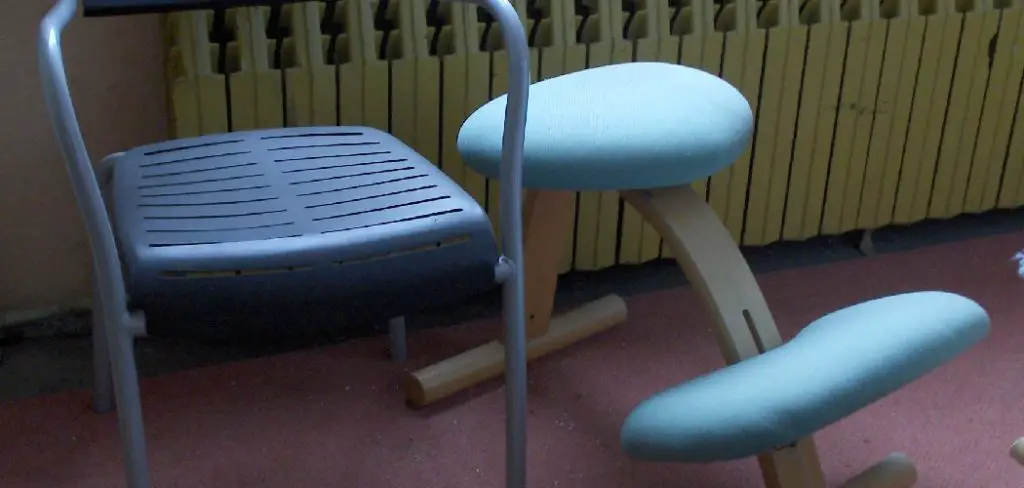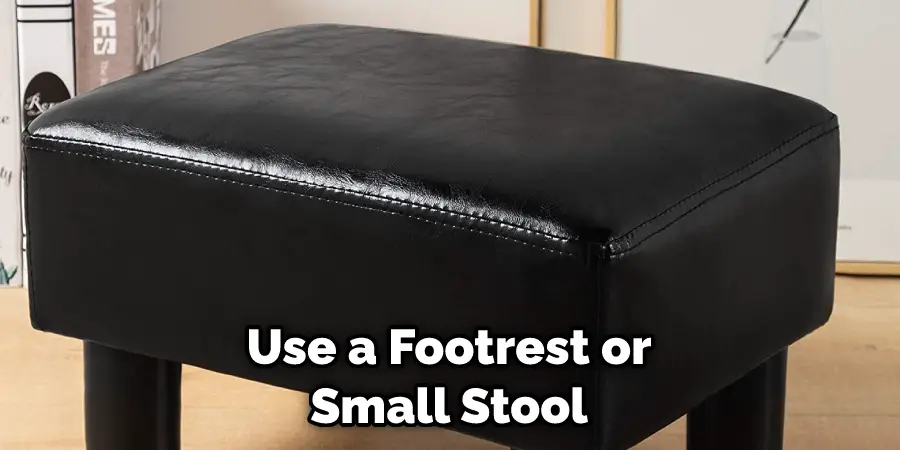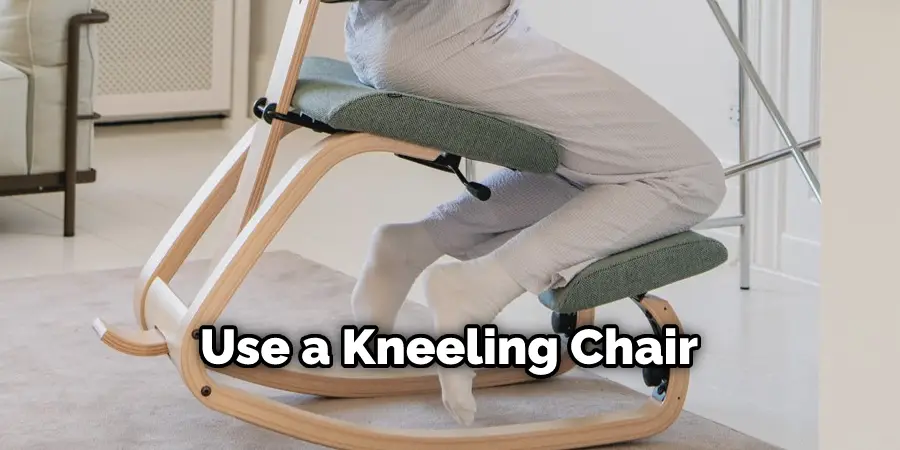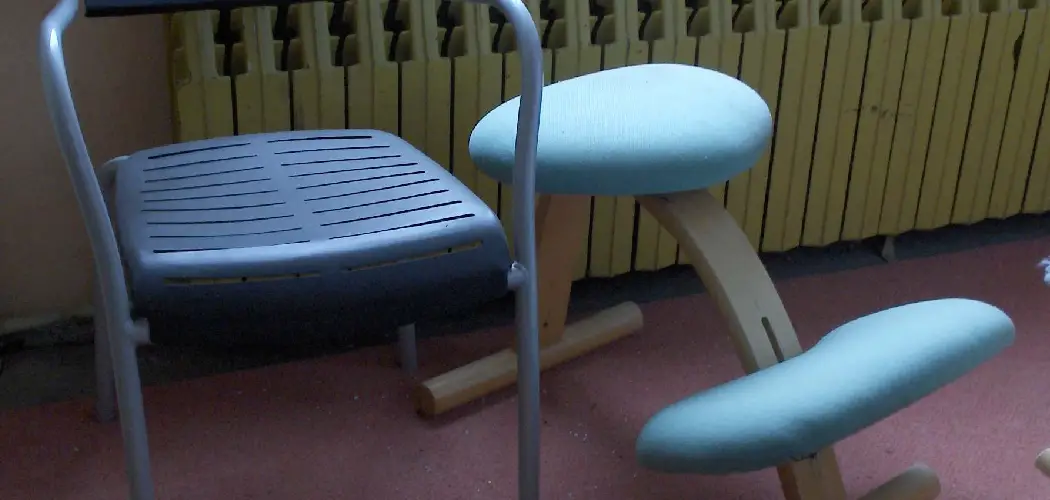Kneeling chairs offer several advantages over traditional office chairs, including improved posture and less fatigue. They are ideal for people who spend long hours at their desks, as the posture associated with the position can reduce back pain and strain. Additionally, some studies have shown that using this type of chair can increase productivity by allowing users to move around more freely.

Using a kneeling chair can provide many advantages. Unlike traditional chairs, kneeling chairs allow users to sit in a more upright position, which reduces the strain on their lower back and neck muscles. This kind of posture helps maintain proper spinal alignment, which is essential for good posture. Additionally, because it puts less pressure on the spine, it can help reduce back pain and fatigue that may be caused by sitting in a more traditional chair. In this blog post, You will learn how to use a kneeling chair in detail.
Step-by-Step Processes for How to Use a Kneeling Chair
Step 1: Inspect the Chair
Before using the chair, check to ensure that all parts are secure and that the chair is in good condition. Look for any signs of wear or tear on the fabric or frame, and ensure that all screws are tightened. Most kneeling chairs have a height adjustment lever-style mechanism that allows you to raise or lower the seat. Adjust the height to a comfortable level for your body.
Step 2: Align Your Spine
Once the chair is adjusted to your preferred height, place your body into the kneeling position. Position your hips over the seat, and make sure that your back is straight and aligned. The proper posture while sitting in a kneeling chair should resemble an S-curve with the pelvis tucked slightly inward.
Step 3: Adjust the Knee Supports
Many kneeling chairs come with adjustable knee supports. The angle of your knees should be at a 90-degree angle while sitting in the chair, so you may need to adjust the knee pads accordingly. Make sure your knees are properly supported and cushioned by adjusting their height or angle.
Step 4: Place Your Feet
The kneeling position requires you to support your weight with both feet firmly planted on the floor. Depending on the height of your chair, it may be necessary to use a footrest or small stool beneath your feet for support. This will help relieve pressure from your knees and hips while sitting in the chair.

Step 5: Sit in the Chair
Once you have adjusted the height and knee supports of the chair, sit down evenly on both sides and make any further adjustments. When kneeling, your shoulders should also be aligned with your hips and remain straight throughout your sitting session. How long you stay seated in the chair depends on personal comfort.
By following these steps, you can ensure that your experience using a kneeling chair is both safe and comfortable. With proper posture and alignment, this type of seating can help reduce back pain by supporting the spine’s natural curvature.
Safety Tips for How to Use a Kneeling Chair
- Adjust the height of your kneeling chair gradually so you can get used to the positioning and ensure you are not putting too much strain on any part of your body while seated.
- Keep your back straight and chin parallel to the ground. This will help reduce tension in your back, neck, and shoulders.
- Make sure that the kneeler is comfortable for you to sit in so that your posture remains correct.
- Depending on how long you sit in the kneeling chair, take regular breaks to stretch your legs.
- Clothing that is too tight or restrictive will put more strain on your body and may cause discomfort while sitting in a kneeling chair.
- Spend no more than 1-2 hours at a time in the kneeling chair to ensure you don’t damage any muscle or put too much strain on your body.
- Use a cushion to provide extra support for your knees and ankles. This will help reduce pressure in these areas, providing greater comfort and support while you are using the kneeling chair.

By following these safety tips when using a kneeling chair, you can ensure that you sit in a healthy and comfortable position. This will reduce the risk of injury and ensure that you get the most out of your kneeling chair.
How Should You Position Your Feet and Knees When Sitting in a Kneeling Chair?
When sitting in a kneeling chair, it is important to correctly position your feet and knees. Proper positioning will help ensure that you maintain proper posture and avoid discomfort or injury. Your feet should be flat on the floor with your toes pointed slightly outward.
You should feel firmly planted on the ground without any additional assistance from the bottom of the kneeling chair. Your knees should be bent at a 90° angle with your shins resting on the chair’s padding, giving you balance and support. Your pelvis should also be slightly tilted forward so that your hips are slightly above your knees.
This helps to keep your spine in proper alignment during the use of the chair. It is important to adjust the chair’s height to be comfortable for you, as everyone will have their own optimal positioning. While in use, be sure to stay mindful of your posture. Keep your back straight and tilt your chin slightly towards the ceiling to help keep your head level with your spine. Switching positions every so often is important to prevent muscle fatigue and strain.
How Can You Prevent Lower Back Pain When Using a Kneeling Chair?
- Start Off Slowly: When first using a kneeling chair, it is important to start off slow and allow your body to adjust over time. Avoid sitting in the chair for extended periods of time or overexerting yourself when adjusting to the new posture.

- Keep Your Back Straight: To maintain good posture when using a kneeling chair, be sure to keep your back straight and ensure that it is supported. Avoid hunching over or leaning forward, as this can lead to muscle strain and lower back pain.
- Make Adjustments: If the kneeling chair you use is adjustable, make sure to adjust it to fit your body’s size and shape. This will help reduce strain and ensure you are comfortable using the chair.
- Take Breaks: To prevent lower back pain when using a kneeling chair, it is important to take regular breaks throughout the day to get up and move around. This will help keep your muscles relaxed and reduce tension in your lower back.
- Use a Supportive Cushion: Kneeling chairs often have optional cushions that can support your lower back while sitting in the chair. Placing a cushion between you and the kneeling chair can help alleviate pressure on your lower back and improve comfort levels.
Following these steps can reduce the risk of lower back pain when using a kneeling chair.
How Should You Store Your Kneeling Chair When It’s Not in Use?
When storing your kneeling chair, you’ll want to ensure that you take proper care of the frame and cushion. When not in use, be sure to store your chair away from direct sunlight and moisture. Sunlight and moisture can cause the wood or metal frame to warp over time. Additionally, use a soft cloth to dust and clean your chair to prevent any dirt buildup or staining.

When transporting the chair, ensure you keep it upright and secure at all times, as the moving parts can shift and cause damage if not properly secured. A great way to avoid any potential damage is to use a sturdy bag when carrying an assembled chair or disassemble it and store it in a large bag.
This will also make transporting your chair easier and more efficient. Now that you know to Use a Kneeling Chair, you can confidently enjoy the ergonomic benefits of a kneeling chair with ease.
Conclusion
In conclusion, a kneeling chair is an invaluable tool for people who need extra support and comfort while sitting at a desk. It can help reduce strain on the back, neck, and shoulders and improve posture by providing a greater range of motion. By taking the time to adjust your knee rest height, seat depth and angle, and armrests and lumbar support, you can create a comfortable and supportive workspace for extended periods of sitting.
With its many benefits and adjustable design, a kneeling chair is an ideal solution if you want to improve your ergonomics in the office. I hope this article has been beneficial for learning how to use a kneeling chair. Make Sure the precautionary measures are followed chronologically.

